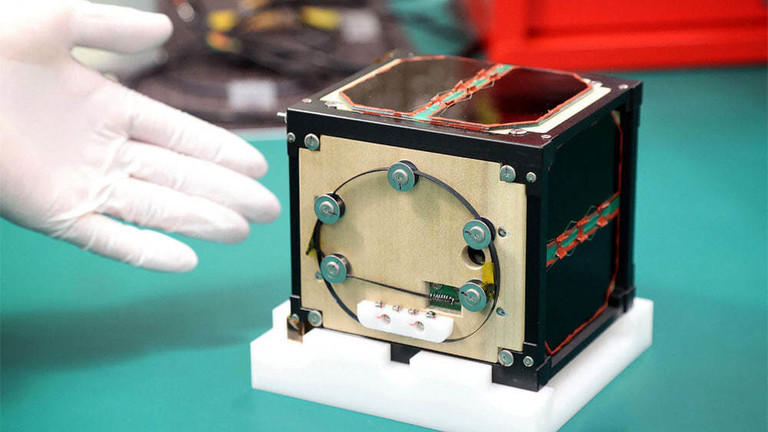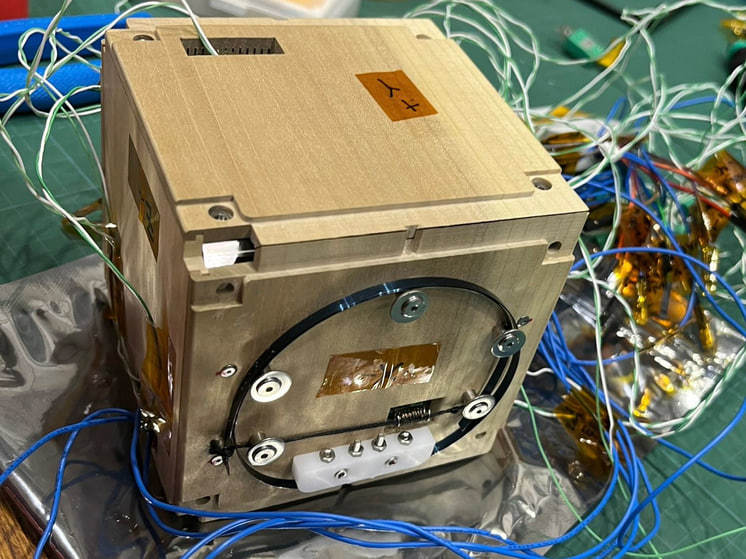World
World’s First Wooden Satellite Successfully Launched into Space (Photos)

In a groundbreaking achievement, the world’s first wooden satellite has been launched into space, showcasing innovative, eco-friendly materials in aerospace technology. See photos and learn about its mission and design.
The inaugural wooden satellite has been successfully launched into space, aiming to demonstrate that timber can serve as a renewable, space-grade material suitable for future construction on the Moon and Mars.
Developed by researchers in Japan, the satellite was sent into orbit aboard an unmanned SpaceX rocket from NASA’s Kennedy Space Center in Florida on Tuesday, as reported by media outlets referencing Kyoto University’s Human Spaceology Center.
Dubbed LignoSat, derived from the Latin term for wood, this compact satellite weighs merely 900 grams and was created through a collaboration between Kyoto University and the construction firm Sumitomo Forestry. It reportedly reached the International Space Station (ISS) the same day, transported by a SpaceX Dragon cargo capsule, and is scheduled to be deployed into orbit approximately 400 kilometers (250 miles) above Earth.
“Wood exhibits greater durability in space than on Earth due to the absence of water and oxygen, which can cause decay or combustion,” stated Koji Murata, a professor of forest science at Kyoto University, in an interview with Reuters.
He further remarked, “Airplanes in the early 1900s were constructed from wood. Therefore, a wooden satellite should also be practical.”
The panels of LignoSat are crafted from honoki, a variety of magnolia tree traditionally utilized for making sword sheaths. The satellite’s box-like structure is assembled using a traditional Japanese method that does not involve screws or glue, and it also features aluminum components and electronic parts.
LignoSat is set to remain in orbit for a duration of six months. Its primary objective is to assess the resilience of wood in the harsh conditions of space, where temperatures fluctuate between -100 and 100 degrees Celsius.

Takao Doi, an astronaut and researcher in human space activities at Kyoto University, expressed to Reuters, “If we can demonstrate the functionality of our inaugural wooden satellite, we aim to present it to Elon Musk’s SpaceX.”
Doi’s team is said to have a comprehensive 50-year vision that includes planting trees and constructing wooden habitats on both the Moon and Mars.
The astronaut emphasized, “With timber, a resource we can cultivate ourselves, we will have the capability to construct homes and sustain life and work in space indefinitely.”
Dr. Simeon Barber, a space research scientist at the Open University in the UK, informed the BBC that this is not the first instance of wood being utilized in spacecraft design.
“We incorporate wood—specifically cork—into the re-entry outer shell of spacecraft to enhance their survivability during re-entry into Earth’s atmosphere,” he noted, mentioning that Soviet lunar landers employed cork to improve a rover’s traction as it approached the lunar surface.
The developers of LignoSat assert that wooden satellites can significantly reduce environmental impact, as they produce far less pollution compared to their metal counterparts when they re-enter the atmosphere.
